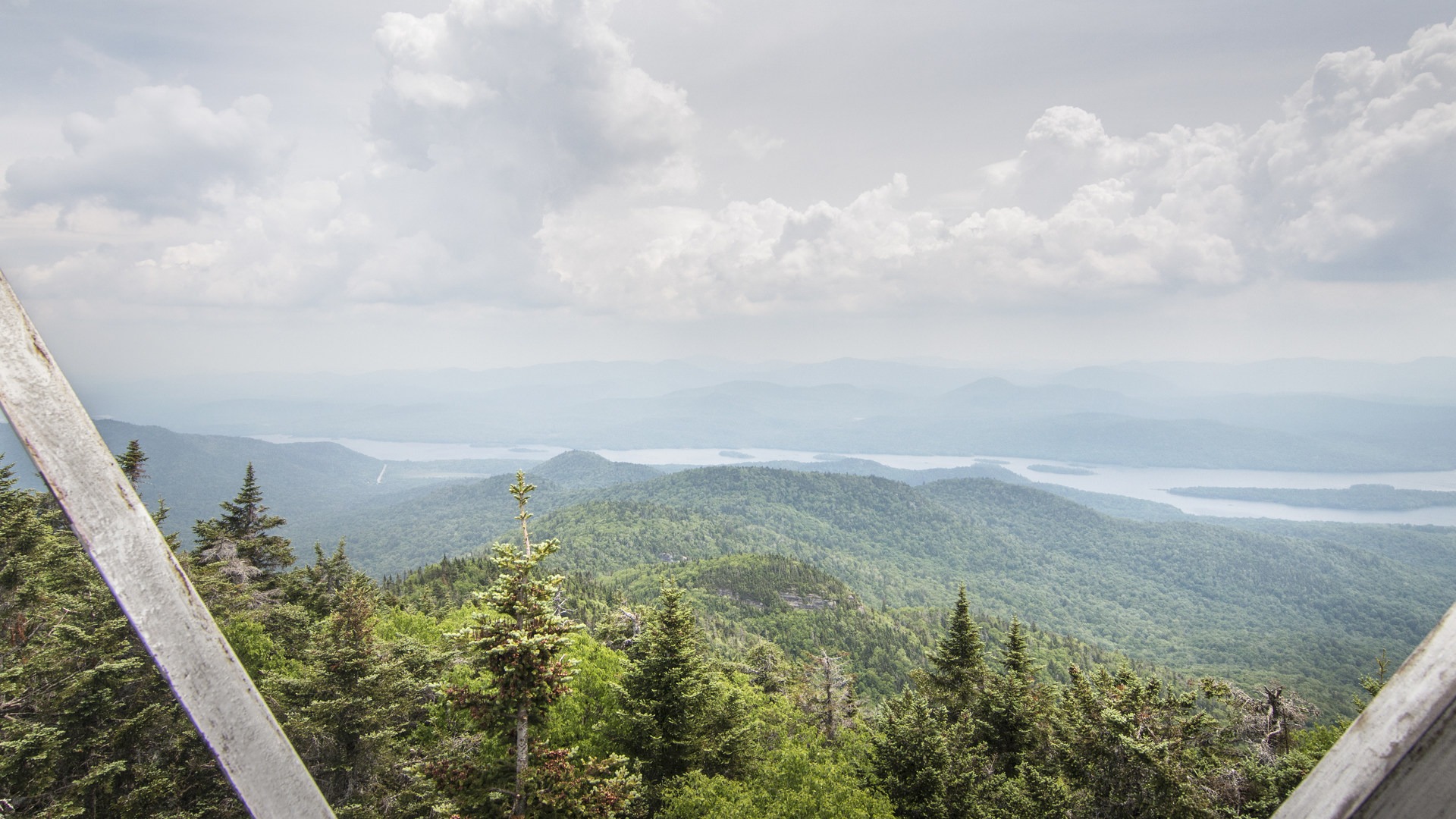You are here
The prominent rock face of Snowy Mountain can be seen across the Adirondack horizon for miles. At its peak stands one of the highest fire towers in New York State. An approximately 7.5-mile round-trip trail climbs over 2,500-feet and connects Route 30 to the summit. Located on the edge of the West Canada Lake Wilderness, this is one of the longer fire tower hikes in the region, but the energy and effort are well worth the visit.
The trailhead is marked by a sign on the western side of the road. There is a small area to park on the opposite side of the road with room for several vehicles. Walk into the woods, and within a few steps you will find the trail registration kiosk. The first part of the hike comes with gradual changes in elevation as the pathway rises and falls next to a stream bed. There are numerous wooden planks that help keep your feet out of the mud, and there are a few bridges that take you over small streams. In some places you will have to find your way across small brooks with some easy rock hopping.
The trail meanders through deciduous forests and hemlock groves as you slowly gain some elevation. At about the halfway point, a lowly stroll through the woods turns into a steep climb. Watch your step on slippery rocks as water runoff usually finds its way down the main trail. Up and up over roots and rock slabs you’ll climb, sometimes using your hands to pull yourself up to the next step. At times the trail levels out through pine groves, but there are still some large boulders to surpass as you make your way up the mountain ridge.
A giant vertical rock slab appears in front of you as the incline again steepens, a reminder of the rocky facade you saw while approaching the mountain from the highway. Work yourself up this final steep section of trail to emerge into a grassy clearing. Take a walk out along the the rock's edge. This is your first introduction to the expansive views that are at the summit, and from here you can look out to the west over Indian Lake.
To continue to Snowy Mountain's summit, return to the red markers and continue up the trail. The final section climbs a slight bit more in elevation. As you reach the top, the base of the fire tower will appear through the woods. For the best views from the summit, you will have to ascend the steps of the lookout tower. Platform after platform will take you to the open-air cabin at the top. Breathe in the fresh wind and take in the expansive views that span for miles. Down below you can see Indian Lake, Lake Pleasant, and the Siamese Ponds Wilderness to the east. The Blue Ridge Wilderness is to the west, and the Canada Lake Wilderness extends to the southwest. Looking south, you can almost make out the Pillsbury Mountain Fire Tower in the Jessup River Wild Forest. Enjoy the incredible perspective of the surrounding Adirondacks and return on the same trail.
History
Snowy Mountain was originally called Squaw Bonnet. The section that bumps out to the northeast is now called Squaw Mountain, perhaps as a tribute to this earlier placename. The first observation station and accompanying log cabin were built at this location in 1909. The original tower was only 15 feet tall, and a phone line connected the station to the town. A 22-foot steel Aerometer tower was erected in 1917 to replace the original wooden one. The cleared mountain top eventually became reforested, so a modification was made in 1933 to raise the height of the tower to 33 feet above the treeline. The tower was added to the National Register of Historic Places in 2001, and the cabin was removed from the summit by 2006.
Fire Towers of New York
For almost a century, observers staffed more than 100 fire towers throughout New York State located primarily on the highest peaks in the Catskill and Adirondack regions. This was in response to the intense logging and tannin harvesting operations that would leave virgin forest barren, dried, and very susceptible to fire. Rangers would often reside in nearby cabins while keeping a regular lookout for smoke and flames throughout the surrounding valleys. If a fire was spotted, a message was sent to the nearby town, and the location of the suspected fire would be triangulated and confirmed by other fire towers in the area.
Beginning in the 1980s the towers were systematically closed as monitoring from planes became more cost effective. Some towers have been dismantled, others remain in disrepair, while a select few have been revitalized by the DEC or purchased and renovated by the general public. Restorations continue throughout the state, and there are many assistance programs you can join to help support and maintain these historic icons. Each tower offers a new and unique perspective of New York and serves as a monument to forest protection throughout the state. Challenge yourself to visit them all!
Logistics + Planning
Current Weather: Powered by Dark Sky
























Comments
Sign In and share them.